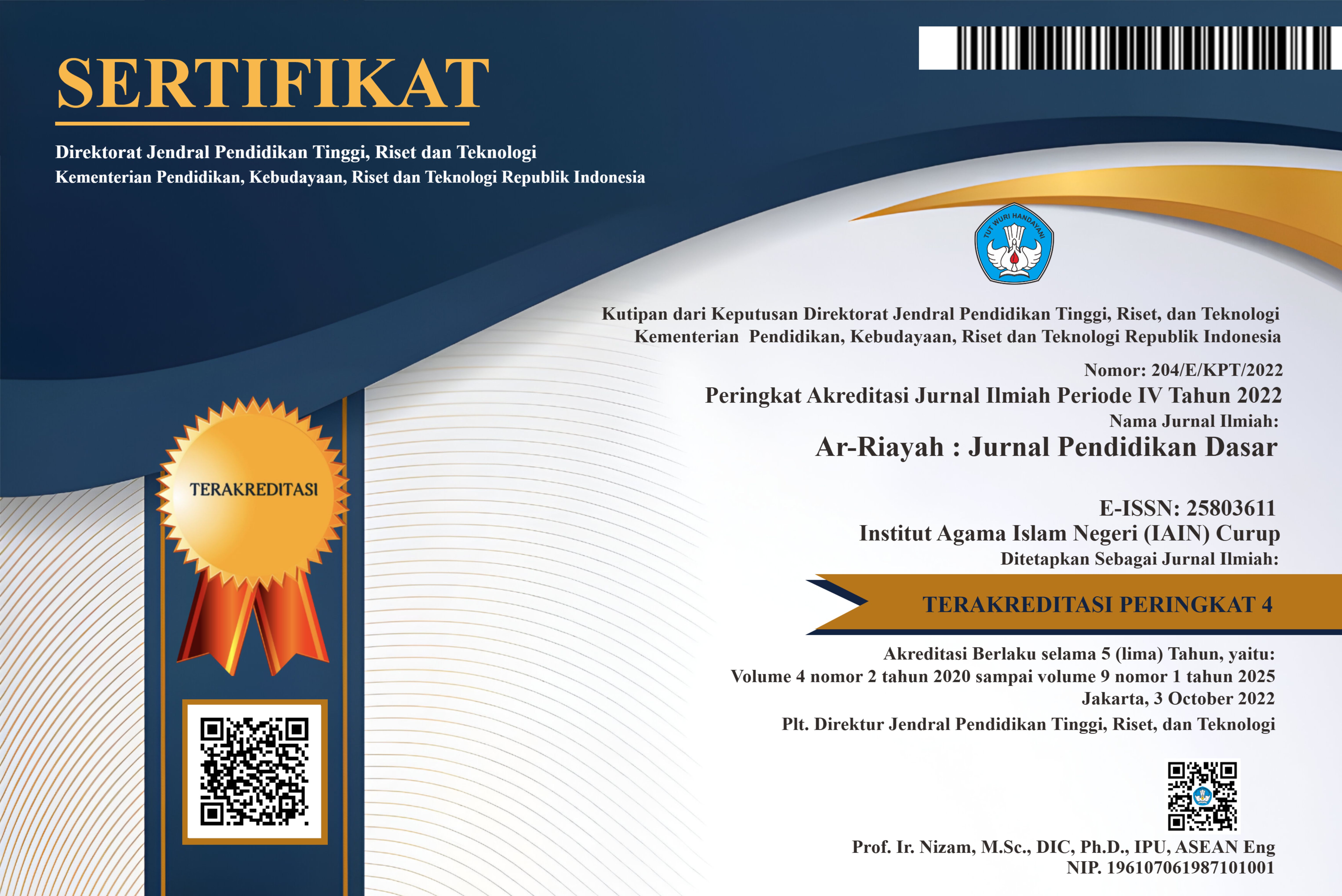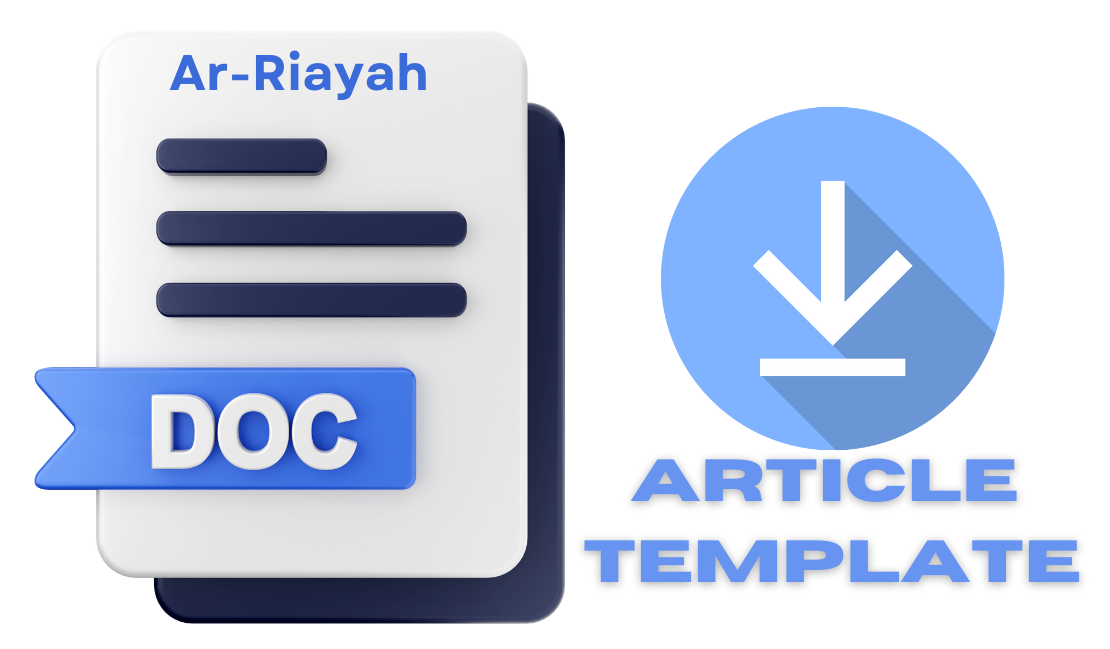Pengembangan Buku Cerita Bergambar Islami Berbasis Pendidikan Lingkungan Hidup untuk Pembelajaran Membaca di SD/MI
DOI:
https://doi.org/10.29240/jpd.v5i1.2668Keywords:
Learning Media, Picture Story Books, EnvironmentAbstract
This research stems from the lack of variation in instructional media in teaching and learning activities, so it is necessary to develop a product in the form of a picture story book as a learning medium. The formulations of the problem are: (1) How is the development of learning media for Islamic picture book based on environmental education for reading learning in class III SD / MI, (2) Is it feasible to teach Islamic picture book learning media based on environmental education for learning to read in the classroom? III SD / MI, (3) How is the response of educators and students to the learning media of Islamic picture book based on environmental education for reading learning in class III SD / MI. This study aims to make students more interested and motivated in teaching and learning activities and understanding the importance of protecting the environment. This research is a research development or Research and Development with the ADDIE model which includes 5 steps, namely analysis, design, development, implementation evaluation. The product feasibility test was carried out by several validators, namely 2 media experts, 2 material experts, 2 linguists, 1 religious expert, 2 class III educators on grade III SD/MI students. The results showed that the learning media for Islamic picture book based on environmental education obtained an average value of the percentage of media experts who obtained a score of 80.25% with a very feasible category, material experts of 86.5% with a very decent category, linguists obtained a score 82.5% in the very feasible category, religious experts obtained a score of 87% in the very feasible category, the assessment of educators obtained an average percentage of 88.25% with the very feasible category and the response of students obtained an average percentage of 95.5% with a very decent category. This shows that the Islamic picture story book based on environmental education for reading learning in grade III SD / MI is very suitable for use as a learning medium.
Downloads
References
Asro Nur Aini, Bambang Sri Anggoro, Fredi Ganda Putra, “Pengembangan Media Pembelajaran Matematika pada Materi Transportasi Berbantuan Sparkol, Jurnal UNION, Vol 6 No 3 (November 2018)
Dyanti Safitrilia Erikalisidiana, Asep Kurnia Jayadinata, Julia, “Pengaruh Penggunaan Strategi True Or False Terhadap Hasil Belajar Siswa Kelas IV Pada Materi Perubahan Kenampakan Bumi Dan Benda Langit, Jurnal Pena Ilmiah, Vol 1 No 1 (2016)
Endang, Widi Winarni. 2018. Teori dan Praktik Penelitian Kuantitatif, Kualitatif, PTK, R & D. Jakarta: Bumi Aksara.
Eni Suryaningsih, Laila Fatmawati, “Pengembangan Buku Cerita Bergambar Tentang Mitigasi Bencana Erupsi Gunung Api untuk Siswa SDâ€, Profesi Pendidikan Dasar, Vol 4 No 1 (2017)
Fidya Rizka Anggraeni, Sumarsih, “ Pengembangan Komik Sebagai Media Pembelajaran Akuntasi pada Materi Akun-Akun Perusahaan Dagangâ€, Jurnal Pendidikan Akutansi Indonesia, Vol 8 No 2 (2015)
Hengkang Bara Saputro, Soeharto. “Pengembangan Media Komik Berbasis Pendidikan Karakter pada Pembelajaran Tematik Integratif Kelas IV SDâ€. Jurnal Prima Edukasiaa. Vol 3 No 1 (2015)
Hendra Adipta, Maryaeni, Muakibatul Hasanah, “Pemanfaatan Buku Cerita Bergambar Sebagai Sumber Bacaan Siswa SD†Jurnal Pendidikan, Vol 1 No 5, (2016)
Istihana, “Pengelolaan Kelas Di Madrasah Ibtidaiyahâ€, Jurnal Terampil, Vol 2 No 2 (2015)
Linda Aprilia, “Pembelajaran Berbasis Alam Dalam Membentuk Karakter Siswa Cinta Lingkunan Dan Berbasis Religi Islami Di Jenjang Sd Sekolah Alam Al-Izzah Krianâ€, Jurnal Inspirasi Manajemen Pendidikanâ€, Vol 6 No 2 (2018)
Ninik Sumiarsi, “Analisis Kompetensi Pedagogik dan Pengembangan Pembelajaran Guru SD Negeri 041 Tarakanâ€, Jurnal Kebijakan dan Pengembangan Pendidikan, Vol 3 No 1 (2015)
Nunuk Suryani, Achmad Setiawan, Aditin Putra. 2018. Media Pembelajaran Inovatif dan Pengembangannya. Bandung: PT Remaja Rosdakarya.
Nurul Hidayah, “Pembelajarnan Tematik Integrative di Sekolah Dasarâ€, Jurnal Terampil, Vol 2 No 1, (2015)
Mahsun. 2013. Teks Dalam Pembelajaran Bahasa Indonesia. Jakarta, Rajawali Pers.
Myrna Apriany Lestari, Marlina Elianti, Adi Permana, “Efektivitas Penggunaan Media Buku Cerita Bergambar Dalam Penanaman Nilai-Nilai Moral Siswa SD Kelas Rendahâ€, Pedagogi Jurnal Penelitian Pendidikan, Vol 4 No 2, (2017)
Rista Karisma, Mudzanatun, Prasena, Pengembangan Media Audio Visual untuk Mendukung Pembelajaran Tematik Tema 7 Subtema 2, Jurnal Penelitian dan Pengembangan Pendidikan, Vol 3 No 3, (2019)
Rusman, Deni Kurniawan, Cepi Riyana, Pembelajaran Berbasis Teknologi Informasi dan Komunikasi, (Jakarta: Rajawali Pers, 2015), h.31
Sugiyono. 2017. Penelitian Pendidikan Pendekatan Kuantitatif, Kualitatif dan RnD. Bandung, Alfabeta.
Wulansari, Betty Yulia & Sugito, “Pengembangan Model Pembelajaran Berbasis Alam untuk Meningkatkan Kualitas Proses Belajarâ€, Jurnal Pendidikan dan Pemberdayaan Masyarakat, Vol 3 No 1, (2016)
Downloads
Additional Files
Published
How to Cite
Issue
Section
Citation Check
License
Authors who publish with Ar-Riayah: Jurnal Pendidikan Dasar agree to the following terms:
Authors retain copyright and grant the journal right of first publication with the work simultaneously licensed under a Creative Commons Attribution-NonCommercial-ShareAlike 4.0 International License (CC BY-NC-SA 4.0) that allows others to share the work with an acknowledgment of the work's authorship and initial publication in this journal.
Authors are able to enter into separate, additional contractual arrangements for the non-exclusive distribution of the journal's published version of the work (e.g., post it to an institutional repository or publish it in a book), with an acknowledgment of its initial publication in this journal.
- Authors are permitted and encouraged to post their work online (e.g., in institutional repositories or on their website) prior to and during the submission process, as it can lead to productive exchanges, as well as earlier and greater citation of published work (See The Effect of Open Access).










